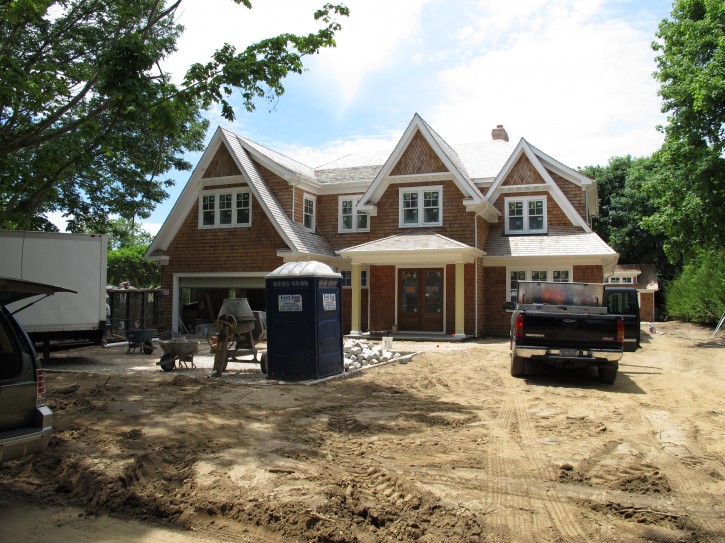
Southampton, NY – Mansions are as synonymous with the Hamptons as cocktail parties, manicured lawns and white sandy beaches.
But some in three of the toniest villages on eastern Long Island are looking to slow down, or even stop, a growing trend of building ever-larger homes on small lots in local neighborhoods, far from the opulent multi-acre estates along the Atlantic Ocean.
“I think it’s horrible,” says 85-year-old Eileen Finlay, the widow of a former village police chief, after seeing a seven-bedroom, six-bathroom home built adjacent to her modest ranch on a narrow, tree-lined street in Southampton.
“I called it a mansion because next to me, my house looks like a little shack,” Finlay said. She said she sold a sliver of her property to developers a couple of years ago to pay some medical expenses but had no idea a nearly three-story home would be built next to her. “What do you do now, complain? Big deal, they’re not going to take it down.”
The village of East Hampton enacted new zoning laws last month aimed at restricting the size of new homes in certain neighborhoods; Southampton village is holding public hearings to consider similar action this week. The nearby village of Sag Harbor is mulling a construction moratorium on large homes.
Jay Diesing, president of the Southampton Association civic group, says local year-round residents — not the summer crowd of the rich and famous — are concerned about the incursion of mega-homes into local historic neighborhoods. He says the quaint, village atmosphere of the community is being overrun by so-called spec houses, built by developers who tear down modestly sized homes and replace them with edifices to attract the Wall Street crowd and others willing to plunk down $5 million or more for the cache of a Hamptons address.
When what Diesing calls “true owners” buy a property, they’re less likely to build humongous homes because they know they’ll have to live there and meet their neighbors.
“But a developer really just wants the headlines,” said Diesing, a wealth management adviser with an office on Main Street in Southampton. “On a third of an acre they will put a seven-bedroom house, swimming pool, pool house and detached garage, and supposedly parking for six cars.”
The zoning changes address the permitted square-footage of a particular residence, while others focus on requirements for the homes to have enough parking spaces — a big issue among residents who complain about car-clogged residential streets.
Evidence of the building boom, which accelerated as the Great Recession waned, is reflected in the number of permits being issued. The village of Southampton took in more than $2 million in building permit revenue in 2014 — $700,000 more than budgeted, said village administrator Stephen Funsch. In East Hampton village, permit revenue was $595,000, double what had been expected.
The issue is hardly unique to the Hamptons. From affluent Southern California communities to neighborhoods outside Washington, D.C., officials have struggled for years with balancing development and preservation. The Los Angeles Times reported last year that builders razed 1,227 houses and duplexes from January through mid-December of 2013, a 29 percent bump over the previous year. The Los Angeles City Council later enacted size limits on new houses in some neighborhoods.
Lisa Liquori, a planning consultant who works with the Southampton Association, said construction of ever-larger houses has been a nationwide trend for decades. According to U.S. Census figures, the average floor area of a new home in 1973 was 1,660 square feet; in 2014 that figure was 2,675 square feet.
“When you have a resort community that sees an influx of wealthy people, that trend is felt and seen even more,” Liquori said.
Interior designer Ann Pyne, who has lived in Southampton for 32 years, predicts the new homeowners will quickly tire of the spec houses, which she particularly abhors on aesthetic grounds.
“None of these homes are going to appear in Architectural Digest,” she groused. “I think these people spend most of their time eating out in restaurants because they can’t stand even living in them.”
Not everyone is unhappy. Alan Schnurman, a real estate broker who has been selling Hamptons homes for decades, says his business is thriving and attributes the complaints to sour grapes from those who declare “Not In My Back Yard.”
“There’s always going to be NIMBY people,” he said. “All of a sudden they want to close the door to future construction. It’s just human nature. Everybody always wants things to stay the same.”
As reported by Vos Iz Neias
